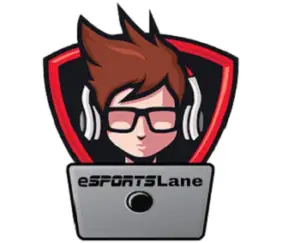As eSports has risen in prominence, some viable professions have been created by its increasing popularity. One of the less spoken about but important career options is that of an eSports Observer and in this article, we will try and explain who is an eSports Observer, what are the roles and responsibilities associated with the position, and much more.
Table of Contents
Who is an eSports Observer?
To an average outsider, eSports can be intimidating to watch, and if even you can wrap yourself around the onscreen commentary, it might not matter too much if you are not given a chance to actually see the play.
As distracting as a misplaced camera or a poorly timed cutaway may be, it is more than likely that your nerd rage will be guided directly to “the observer” at one target.
Observers are responsible for switching from interesting camera angles and player perspective to create a cohesive and engaging viewing experience, and when done well you wouldn’t even notice they exist. However, if it goes wrong it is not harder to miss.
Observing is an underappreciated art that’s been around since the very beginning of the broadcast of eSports. It is a thankless role that is usually held by a few individuals in control rooms during events. Over the years these unsung heroes have become crucial to the growth of eSports.
Also Read:
What does it take to be an eSports Observer?
If you are now thinking how hard can it be, trust us it’s not the easiest of roles. More importantly, it’s a job that’s very involving.
To be an observer you truly need to understand the map of the game, to be a great observer there is so much depth to it.
At its core, observing is about storytelling, every camera pan or perspective change is a decision made with a specific objective in mind.
An observer is someone with keen eSports eyes, experienced with the game being observed, attentive to small details, high concentration power, and most importantly a team player.
To be an amazing observer the most important quality is to be a great team player and form great chemistry with the co-observer, the director of the event, and the production team of the eSports event.
The Timeline of eSports Observer
To truly appreciate how far observing has come, we need to go back in time when it was just a community-driven effort.
During the arcade era of the early 90s, competitors would stand at a machine duking it out for supremacy while someone just behind them would describe the action for the fans in the back.
With the rise of PCs and the internet later that decade, titles like StarCraft really blazed the trail for in-game observing clients.
As interest in spectating grew the community eventually created a plugin that enabled lobby slots for would-be observers, offering them a full vision of the maps during matches.
While it was not perfect, the concept was revolutionary. Up until the 2010s, this observing model was pretty much the norm but thankfully today this junk approach is fully gone.
Eventually in 2012, Riot implemented an actual spectator client that was pretty robust and formed the foundation for what league broadcast would become.
Today with eSports competing with other sports for views and attempting to lure in more fans, professional observing has become more important than ever.
Also Read:
How does an eSports Observer Earn?
Observers earn by participating in events that involve tournaments and leagues. Mostly the observers work and are paid per event they are involved in, but at times are also involved on a full-time basis with a production team that manages eSports events and are paid monthly or yearly.
Why Become an eSports Observer?
No doubt, the fact that you do what you love is literally the most rewarding part of being a professional eSports observer.
An eSports observer is responsible for the growth of the game. An observer doing their work right brings up a new audience to the game, new players, and hence growth to the game.
An eSports observer is a faceless ghost that adds a lot of value to the growth of the game and essentially builds up the foundation for the game’s future. eSports is still a work in progress, so esports platforms will likely dig further and deeper into this development model.
Challenges with eSports Observer Career
Every job has its limitations and challenges, and so do the job of an eSports observer.
A bad job at observing can cost the game a huge sum of the potential audience that came to see the game for the first time.
An observer is not only responsible for streaming the game content, but is also responsible for making the game a story, a story when told beautifully hooks up new eyes to the game and in turn to the business of the game.
It is not an easy task to become an observer, for a game event or a league match maximum of two or three observers are working for the length of the event or league.
These events or leagues run from days to a month, so basically, there are not many opportunities in the field.
The job of an eSports observer is not an easy one. Most league matches are played back-to-back and a day’s event can be anywhere from around eight to twelve hours.
For these hours an observer is required to do their job without losing any concentration and deliver an impeccable and nerve-racking experience for the audience.
Final Words on the eSports Observer Job
Observers are every bit as essential to esports as the players themselves, without their coordination, keen eyes, and understanding of the game we might not have so many moments we have grown to treasure over the years.
Observers empower casters to produce iconic sound bites we will remember forever. They are fundamental in bringing new fans into the scene. The job of an observer is worth a million praise, it can be so hard to focus on one thing when so much crazy is happening all around.
Observers catch so many minor game-changing details that we might miss and one will go as far as saying that observers really do see the whole picture.


